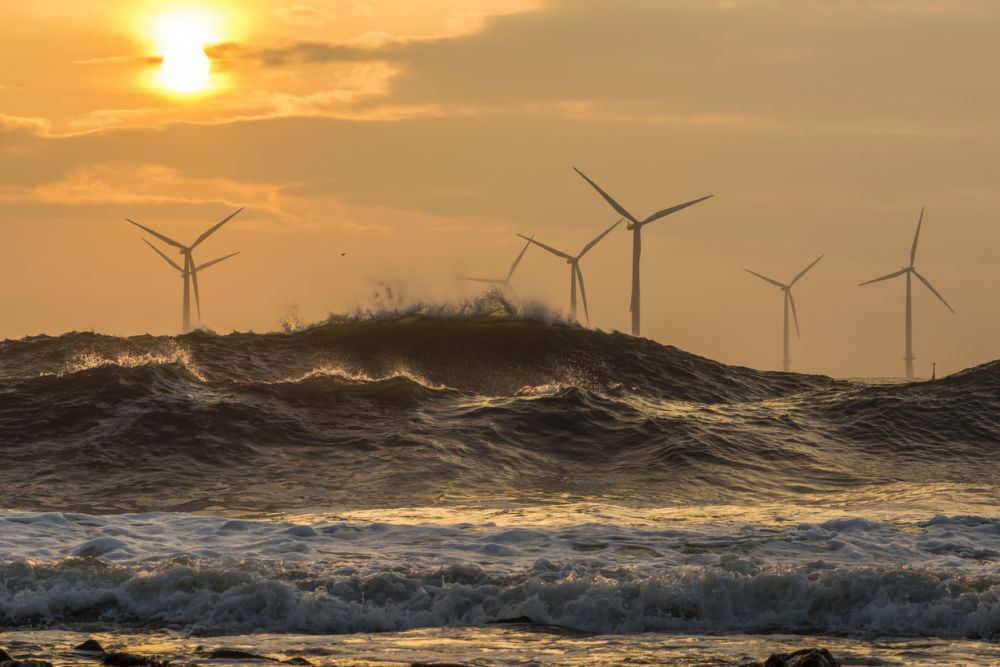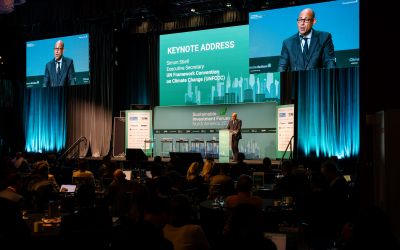How Clean Energy Finance Supports Sustainable Growth
Sustainable finance is critical in working towards global net-zero goals. As one of the largest banks in the world, with a presence spanning both developed and developing markets, Santander recognises the need to support the UK Government’s Clean Power 2030 initiative. The Bank is working with clients to power renewable energy and clean technology in the UK and globally.

Santander aims to support the green transition by powering inclusive, sustainable, economic growth. We are mindful of the fact that the markets in which we operate are at different stages of the green transition, with differing needs and regulatory frameworks. We are determined to work with them to deliver a transition that is just and stable, powered by growth.
We also believe in the power of connections to accelerate positive change. By working directly with our corporate and commercial clients, we help them navigate their own green transition with the right financial products, advisory support, and partnerships to ensure long-term sustainability.
The move to clean energy
The generation and use of energy is one of the pillars of societal development – essential for economic growth, public health and overall wellbeing. Recent global volatility has exposed the significant vulnerabilities in our energy structures, disrupting economies and threatening stability.
In this context, moving to home-grow clean energy – power that does not derive from fossil fuels or other polluting sources – is essential both as a climate imperative and a developmental necessity. The ambition is also aligned with the UK Government Clean Power 2030 initiative, which aims to transition Great Britain’s electricity system to primarily rely on clean energy sources by 2030. These benefits together have a tangible benefit for the wider public, particularly in a shifting global energy market.
The solutions require companies like Santander to work to support a just transition over the coming decade using the levers like innovation and societal engagement to shift to a more sustainable economy. Sourcing more of the UK’s energy from renewables like onshore and offshore wind, solar PV, and hydro; grid flexibility and energy storage, e.g. using batteries and smart grid technologies to manage supply and demand more efficiently; and more nascent technologies for hard-to-abate sectors and other challenges that are difficult to solve, can help lower and stabilise energy prices, making businesses more competitive. It also strengthens energy security by reducing reliance on imported fossil fuels – an increasingly important factor amid global energy volatility.
Financing renewable energy and clean technologies
Santander has a long track record of funding renewable energy projects. In the early days, these projects tended to be supported by government subsidies, which offered predictable revenues and greater certainty to lenders.
While governmental support remains through Contracts for Difference (CfD), the market now also sees long-term revenue contracts with corporate power-purchase agreements (PPAs) and non-contracted / merchant revenues.
Additionally, the market has seen evolution in terms of project size, portfolios being brought forward for funding support, a greater spread of technologies (across generation and flexibility) all of which is set against a dynamic policy backdrop.
Overcoming challenges on the path to clean energy
For many businesses in the UK, accessing finance is one of the most challenging hurdles on the road to net-zero. Low-carbon energy projects can have high up-front costs and long payback periods that make gaining buy-in a challenge. There are additional challenges, too, for the organisations funding these projects.
Strained supply chains (including the challenges to access critical minerals, as well as geopolitical events) affect timing and delivery of projects. Talent, too, is a constraint, with increasing need for skilled workers creating a challenge in attracting and retaining talent, with the following global auction for skills inflating development budgets and forcing funds to build in shadow costs for retention schemes or outsourced EPC guarantees.
The funding ask itself is highly specialised, with hybrid capital that can price subordinated revenue waterfalls, integrate tax-equity structures and absorb technology learning curves. The pool of providers offering that sophistication remains finite, so execution risk rises when multiple multi-billion-pound auctions close in the same quarter.
Bridging the energy gap
While the UK has set ambitious targets for decarbonisation on its road to net-zero, the country faces an increasing gap between its energy goals and actual deployment. Given challenges in grid connection speed, planning system and investor uncertainty, tighter alignment needs to exist between government, business and investors.
Fortunately, the government has proved its willingness to listen to business and the financial community on solutions. The UK Government launched the British Infrastructure Taskforce in October to explore options to support the Government’s infrastructure goals. One of the streams of the Taskforce, co-chaired by Santander UK, focuses on energy. Working with representatives across the industry, that workstream has considered solutions around funding and procurement challenges.
Ultimately, bridging the current energy policy gap means increasing collaboration between policymakers and the private sector to drive sustainable initiatives and progress global climate goals. Government could create incentives and attractive policies that encourage green growth within the private sector; but green finance is vital to supporting that progress, encouraging development and facilitating projects that will allow businesses to increase their renewable energy use and meet their sustainability targets.
The future of renewable energy and clean technology finance
Across the UK, businesses are increasingly turning to strategic partnerships to secure long-term access to clean energy and work towards net-zero goals. From major retailers to manufacturers and infrastructure providers, recent deals show how collaboration can unlock new renewable capacity, reduce emissions, and stabilise energy costs.
In 2021, Santander provided a £15m revolving credit facility to Gore Street Energy Storage – the first listed energy storage fund in the UK and currently the only energy storage fund to operate across five electrical markets with a total energised capacity >750MW. Since then, the bank has since increased facilities to £100m as the sole lender and structuring bank supporting Gore Street’s continued expansion. In the 2024 financial year, Gore Street’s portfolio helped avoid 15,178 tonnes of CO2e, driving the green transition in the UK, Ireland, Germany and the U.S.
While challenges remain within the space, there are many reasons to be excited about the future of sustainable finance. The scale and demand for this kind of financing is unprecedented and growing – Santander Group reached its goal of mobilising €120bn in green finance between 2019 and 2025 eighteen months ahead of schedule, making headway with our next milestone of achieving €220bn by 2030.
While renewable energy projects play a significant part in this number, the good news is that other elements are contributing increasingly to that target too. The increasingly broad mix of finance activity indicated that while challenges remain, such as labour and costs, sentiment is only pointing one way: more renewable energy, for a more sustainable economy.






